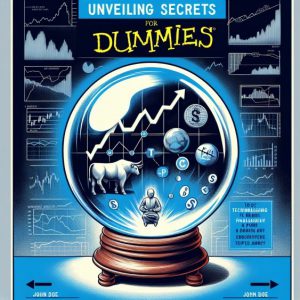
Investment Pitfalls: Winning Strategies through Independent Choices
March 14, 2024
The investor’s chief problem—and even his worst enemy—is likely to be himself.” – Benjamin Graham, renowned investor and author of “The Intelligent Investor.
In investing, the most significant pitfalls often lie within our minds. As the Stoic philosopher Seneca once said, “It is not because things are difficult that we do not dare; it is because we do not dare that things are difficult.” This rings true in investing, where fear, greed, and herd mentality can lead us astray. However, we can navigate these investment pitfalls and emerge victorious by going against the grain and adopting a contrarian approach.
The Perils of Herd Mentality: Navigating the Dangers of Groupthink in Investing
“The individual investor should act consistently as an investor and not as a speculator.” – Benjamin Graham.
A crucial investment pitfall to avoid is becoming trapped by the sway of mass psychology. Harness the insights from collective behaviour data and turn the tides of mass psychology to your favour rather than being subjugated by it. When markets are soaring, it’s easy to get caught up in the euphoria and make impulsive decisions. Conversely, fear can drive investors to sell at the worst possible time during market downturns. Roman philosopher Marcus Aurelius said, “You have power over your mind—not outside events. Realize this, and you will find strength.”
A study by Dalbar, a leading financial services market research firm, found that in 2020, the average investor underperformed the S&P 500 by 5.96%. This gap can be attributed to investors falling prey to emotional decision-making and failing to stick to a long-term strategy.
The Power of Contrarian Investing
“Be fearful when others are greedy, and greedy when others are fearful.” – Warren Buffett, legendary investor and CEO of Berkshire Hathaway
Contrarian investing involves going against the prevailing market sentiment. Contrarians look for opportunities to sell when everyone buys, and vice versa. This approach requires discipline and a strong belief in one’s analysis. As the 18th-century British economist David Ricardo noted, “The whole art of investment is to buy low and sell high. I have found that when I have bought high and sold low, it has been a mistake.”
One recent example of successful contrarian investing is Michael Burry, the hedge fund manager featured in the movie “The Big Short.” In 2005, Burry recognized the housing market bubble and invested in credit default swaps, essentially betting against the subprime mortgage market. When the bubble burst in 2007-2008, Burry’s fund reaped substantial profits.
Technical Analysis: A Tool for Navigating Pitfalls
“The market is a device for transferring money from the impatient to the patient.” – Warren Buffett
Technical analysis involves studying past market data, primarily price and volume, to identify trends and make informed trading decisions. Investors can spot potential investment pitfalls and opportunities using moving averages, relative strength index (RSI), and chart patterns.
A study by Charles Schwab found that from 1926 to 2019, the S&P 500 experienced an average intra-year decline of 13.8%. However, despite these annual dips, the index delivered positive returns in 74% of those years. This data highlights the importance of patience and technical analysis to navigate short-term volatility.
The Wisdom of Long-Term Investing
“The stock market is filled with individuals who know the price of everything, but the value of nothing.” – Philip Fisher, influential investor and author of “Common Stocks and Uncommon Profits”
Adopting a long-term perspective is one of the most effective ways to avoid investment pitfalls. As the philosopher Aristotle said, “Patience is bitter, but its fruit is sweet.” Investors can ride out short-term fluctuations and benefit from compounding returns by focusing on the intrinsic value of investments and holding them for extended periods.
Consider the case of Amazon, which went public in 1997 at $18 per share. Despite experiencing significant volatility over the years, including a 95% drop during the dot-com crash, Amazon’s shares have grown to over $3,000 as of 2021. Investors who held on through the ups and downs have been handsomely rewarded.
The Resilience of Value Investing
“The stock market is a device to transfer money from the Active to the Patient.”—John Maynard Keynes.
In the labyrinth of investment strategies, value investing stands out as a beacon of resilience. This approach, popularized by Benjamin Graham, the father of value investing and later perfected by his disciple Warren Buffett, focuses on purchasing stocks that appear underpriced by some fundamental analysis. Graham would say, “In the short run, the market is a voting machine, but in the long run, it is a weighing machine.”
Sophisticated investors of the 20th century often found themselves at odds with the market’s whimsical trends. One such investor was Sir John Templeton, who famously embarked on a contrarian expedition during the height of World War II. He purchased shares of each public European company trading at less than $1 per share. This bold move, which seemed reckless then, eventually paid off handsomely after the war, demonstrating the strength of a contrarian mindset and value investing principles.
Value investing requires a diligent assessment of a company’s fundamentals, such as earnings, dividends, and sales, and then comparing them to its market value. The gap between a company’s market price and its intrinsic value is the “margin of safety,” providing a cushion against errors in judgment or unforeseen market downturns. This principle saved many investors during the bursting of the tech bubble in 2000, where the companies with sound fundamentals and undervalued prices survived and thrived post-crisis while overvalued ‘paper giants’ crumbled.
As Keynes, a talented economist and a successful investor in his own right, advocated for a focus on long-term horizons and the avoidance of speculative behaviour, his investment philosophy aligns closely with value investing. His approach was to identify high-quality companies undervalued by the market, invest in them, and wait patiently for the market to recognize their true worth, regardless of the current economic climate or popular opinion.
The resilience of value investing lies in its immunity to the hype and noise of the market. It is a testament to the idea that what is popular is not always right, and what is right is not always popular. Ultimately, the patient, a discerning investor, often emerges victorious, sidestepping the siren call of investment pitfalls that trap the unwary.
Before we conclude, remember that while the market’s waves may crash and roar, the true North of investing remains the same: finding value and holding onto it until the rest of the world sees what you’ve seen all along.
Conclusion
The most important quality for an investor is temperament, not intellect.” – Warren Buffett.
Navigating investment pitfalls requires emotional discipline, contrarian thinking, and a long-term perspective. By going against the grain and focusing on the intrinsic value of investments, investors can overcome the challenges posed by mass psychology and short-term volatility.
As the philosopher Friedrich Nietzsche said, “That which does not kill us makes us stronger.” By learning from the wisdom of great thinkers and investors and embracing the power of patience and discipline, we can transform investment pitfalls into opportunities for growth and success.
Other Reads

Investing allows you to beat inflation and maintain the purchasing power of your money over time

Mass Psychology of Fascism: Unmasking Bombastic News

OVV Stock Forecast: Buy, Hold, or Sell?

What Does a Death Cross Mean in the Stock Market? Exploring Its Significance

Financial Freedom Book: A Pinch of Salt, a Splash of Whiskey

Unveiling Secrets: Technical Analysis for Dummies

The Primary Purpose of Portfolio Diversification is to Finesse Your Investments for Optimal Returns

The Enduring Reign: Why is the US Dollar the World’s Most Pre-eminent Currency?

Fiat Money Example: The Dollar Shines as a Prime Illustration

Dogs of the Dow ETF: BiggerBite, Less Work

How Do You Win the Stock Market Game? Effective Strategies

Black Monday 1987: Turning Crashes into Opportunities

Technical Analysis of Trends: Cracking the code

A Sophisticated Approach: Do Bonds Increase Returns When the Stock Market Crashes?

Emotional Manipulation Tactics: The Dominant Force on Wall Street
The Successful Investor: Embracing Market Trends


